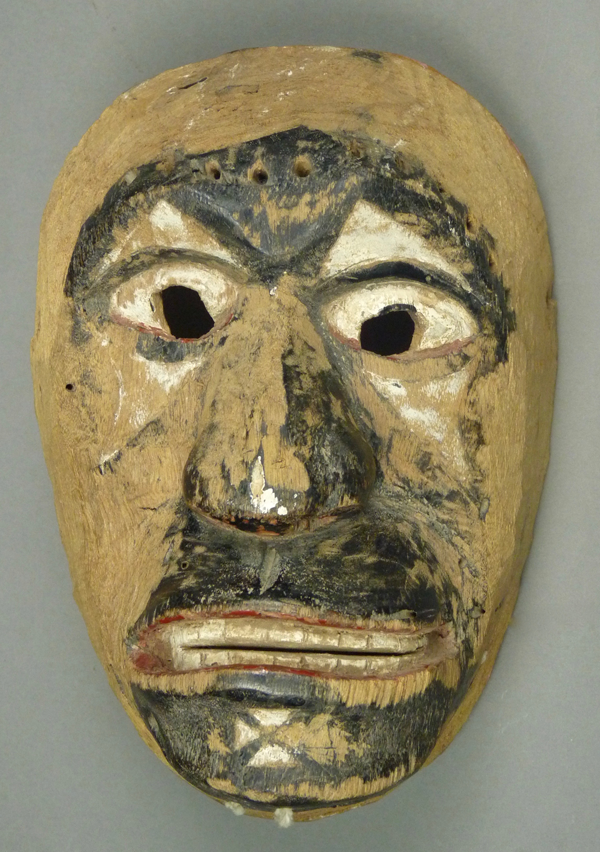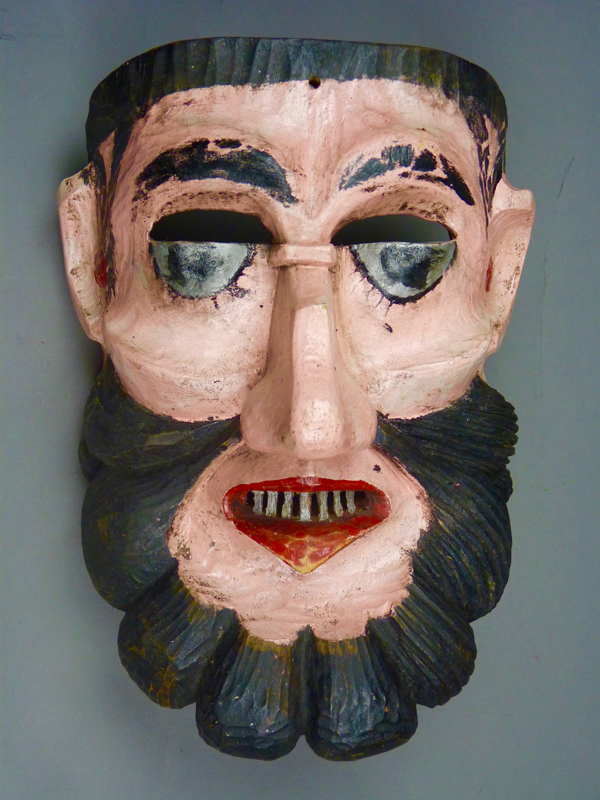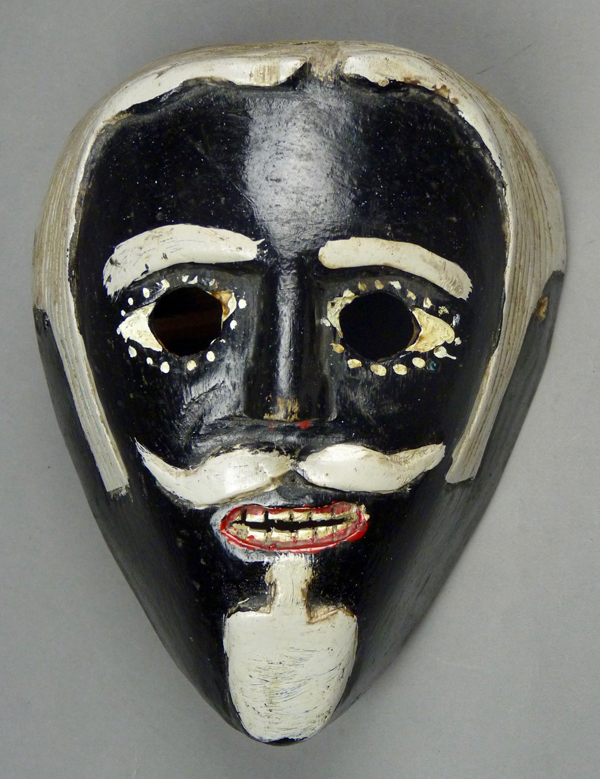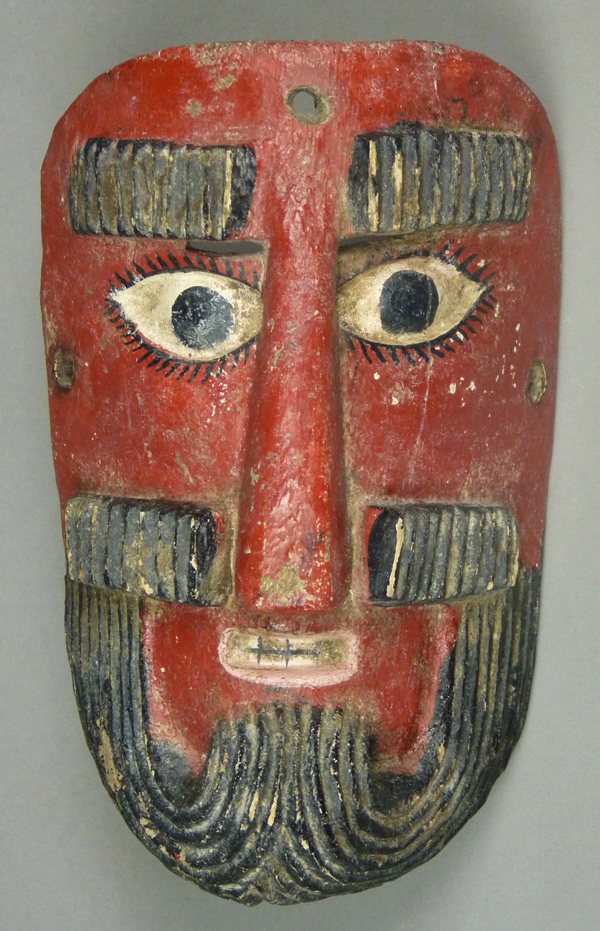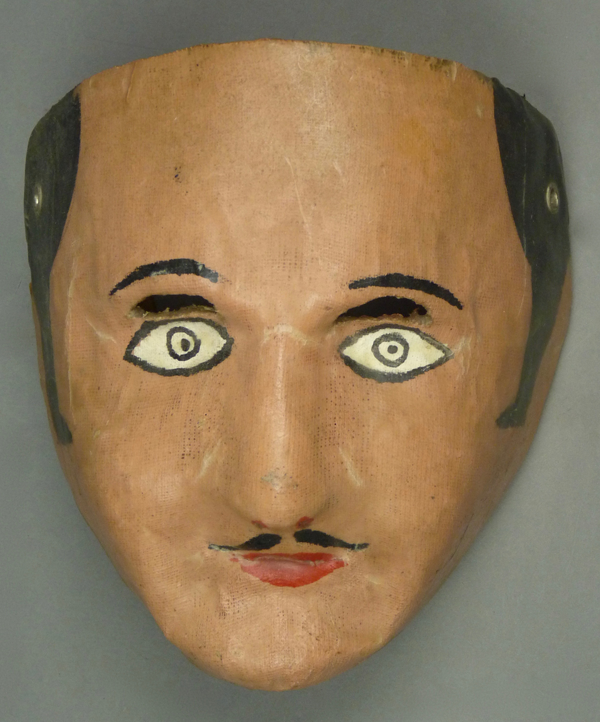A cluster of four Pascola masks showed up recently on EBay™, for sale by Gallery West of Tucson. Two Yaqui masks bear telltale design details of my favorite Yoeme carver, Manuel Centella Escalante. He lived and worked in Potam, Sonora, but frequently traveled to the Yaqui villages in the Tucson area to participate in fiestas. The condition of the Yaqui masks might not appeal to all collectors. The other two, charming Mayo Pascola masks from the Mexican state of Sinaloa, are certainly in far better condition.
Here is the first of the pair I am attributing to Manuel Centella Escalante. Someone had scraped the paint on the face, probably in preparation for repainting, but then a Yaqui picker, Rodrigo Rodriguez, who was also a well-known mask carver, had purchased it in 1984, before it could be repainted. It was said to be the work of Antonio Faroi, a carver who is unknown to me. Roberto had bought it for Barney T. Burns. Barney sold it to a Tucson collector, who showed me the mask in 2004. Despite the scraping, there were enough of the original painted designs left to indicate that Manuel Centella had surely been the maker. Many years after that moment of recognition, when the mask had passed through other hands, I was able to purchase in on EBay, in May 2018. I estimate that this mask was actually carved in the 1960s or 70s, roughly 50 or 60 years ago. I should note that my ability to spot this maker’s work had been vastly sharpened by the kind teaching of my friend, Tom Kolaz of Tucson, who is another great fan of Manuel Centella’s work.
Typical Manuel Centella features are visible, including the white triangles over the eyes, the large and broad nose (with white painted designs on a vertical line down the center), the graceful artistic white triangles under the eyes, the small carved teeth, and the chin cross of four small triangles with inscribed outlines. There would have been a similar but larger cross on the forehead.

